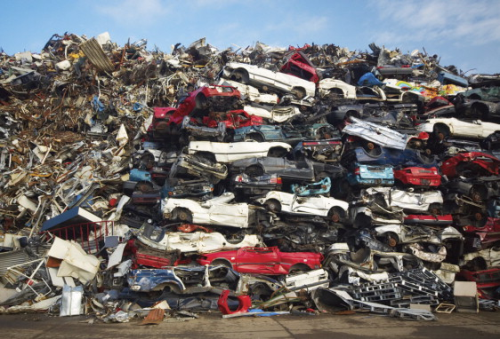
The European Composites Recycling Services Company (ECRC) was founded in 2003 by a number of key players in the composites industry, including Inoplast, MCI (formerly Menzolit-Fibron), Owens Corning, Vetrotex, Johns Manville, Reichhold, DSM, Polynt (formerly Lonza) and the European Composites Industry Association (EuCIA). Its mission is to provide cost effective recycling solutions that will enable the composites industry to meet its environmental responsibilities and, in doing so, provide a platform for future growth.
ECRC's initial focus is on solutions that will meet the demands of the recently implemented European Union (EU) Directive on end-of-life vehicles (ELV).
Automotive
The ELV Directive states that vehicles must have a minimal impact on the environment at the end of their usable life. End-of-life vehicles generate around 9 million tonnes of waste each year so reuse, recovery and recycling are important issues. As of January 2006, this legislation has required that 80% of the vehicle weight must be reused and recycled, and this figure will increase to 85% by 2015.
The automotive industry is one of the largest users of composites today and year on year the penetration of composites continues to grow with every new model launched. The reason for this is simple. Composites have contributed to lowering the weight of an average passenger car by more than 200 kg and the potential for further savings is enormous. This weight saving translates into fuel economy, and that means 35 litres of gasoline per year. This becomes a huge environmental saving when multiplied by the 17 million cars that are built each year in Europe.
The average plastics weight content of a vehicle in Europe today is around 120 kg, of which about 20% is composite material. Composites are also major contributors to passenger and pedestrian safety, allowing the designer and engineer the freedom to provide pleasing shapes which also absorb impact energy. There are a wide variety of resin and reinforcement systems to be found in applications in today's modern car; within this very broad spectrum there are a number of recycling solutions available for parts that have reached the end of their useful life.
Sheet moulding compound (SMC) and bulk moulding compound (BMC) are one of the key families of materials for large body panels such as the trunk lid of the new VW EOS, as well as load bearing and energy absorbing modules and components as can be seen on the impressive floor module of the Renault Megane. Of the estimated 145 000 tons of SMC used in general transportation applications almost 40% can be found in passenger cars. This figure is likely to increase as car makers take advantage of the lower cost of tooling for special series and derivatives which go to make up a model range.
SMC and BMC by their thermosetting nature need to be treated differently to thermoplastic systems in order to regain useful recycle products. In all cases, after collection and cleaning, the parts have to be shredded and granulated in industrial grinding operations. Following this the basic elements can be extracted through a sieving process, producing glass and resin aggregates, which can be processed into valuable reinforcements and filler for the next generation of either thermoplastic or thermosetting composites systems.
Today, ECRC is on track to provide its members with a closed circuit of cost effective logistics, shredding, grinding, and second generation outlets for the products they are now being required by original equipment manufacturers (OEMs) to take back after their useful life has ended.
Performance characteristics of the recycle products need to be matched to the requirements that the next generation of applications require – in some cases this means back into the original application, but most often, into a different industry that does not have the very high specifications demanded by automotive end-users. Ultimately the objective is to find new, value-added outlets for the materials in a second generation value chain. Indications are that there is interest from cement and gypsum users for the recovered fibres in the building industry for applications in floor and wall coverings, as a result of a high alkaline resistance resulting from their exposure to polyester resins. The reground aggregate is also proving to be a competitive filler for thermoplastic resins and could bring additional benefits in processing.
The first commercial automotive application incorporating recycled SMC materials will be in production shortly for a structural component in a reinforced polypropylene (PP) compound and will be the start of more to come.
Other markets
ECRC is also increasing its contacts to companies that work in other industry sectors, for example in marine, wind energy and piping systems, which will also be influenced by developing EU legislation regarding the end of the application's useable life. Clearly, larger parts like boats and wind turbine blades will require a different approach to recycling compared with the smaller components coming from automotive and electrical industries.
ECRC has also been challenged to deliver its service model across Europe and is actively developing relationships between the key players in the composites chain, starting in Germany and France and widening the network as demand increases.
In all cases, composites is a large and important growth industry for future cost effective applications that provide us with essentials such as transportation, energy and water – things we cannot ignore and where composites provide the best solution. ECRC is a leader in the composites industry, set up and managed by the leaders from that industry. Meanwhile ECRC is trying to collaborate with other players including waste management companies and those involved in disassembly operations.





